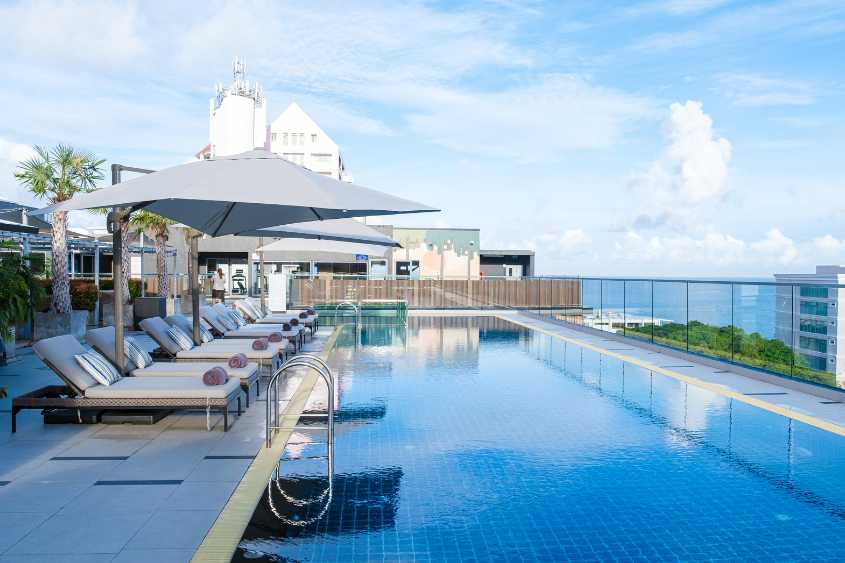
A personal approach
to body corporate management
That’s why we take the time to listen, tailoring our management approach to suit every person, their communication style and business preferences.
Receive an obligation
free proposal
Please contact us here if you are seeking a proposal for a building we don’t currently manage. If you are an existing BCsystems customer please email us at info@bcsystems.com.au
Common property is a defining yet sometimes confusing aspect of living in a body corporate scheme. Understanding what constitutes common property, its maintenance, and the responsibilities surrounding it is essential for all owners within a scheme.
This article looks at the nuances of common property in a body corporate.
What is common property?
The legal definition of common property includes all areas of a body corporate building and land that are not included within any individual owner’s lot.
Common property is jointly owned by all lots and maintained by the body corporate. For instance, in a high-rise apartment complex, each owner ‘owns’ their own unit, however shared walkways, foyers, gyms, pools and lifts, and common use gardens and grounds are common property.
Common property can also include physical assets such as pool furniture, BBQ, gardening tools, pumps etc. It is collectively used and owned and does not belong to any single lot.
Common property generally includes:
- Shared gardens, lawns, and grounds
- Shared stairways, lifts, ramps, foyers
- Access roadways
- Shared basement or other car parking areas, including garage doors and their associated fixtures and fittings
- Roof of apartment buildings
- Shared facilities like BBQs, pools, gyms, spas, saunas
- Top-floor ceiling-roof cavities in apartment buildings and many townhouses
- Exclusive-use courtyard areas
- Roofs of many townhouses
- Utility infrastructure such as water, power, and sewerage systems within walls or below ground
- Building foundations and exterior walls of townhouse-style dwellings
Care and maintenance of common property
The body corporate (all owners) is responsible for the upkeep of common property. This includes repairs and maintenance, fixing defects, and undertaking necessary replacements and upgrades of common areas and their facilities.
To fund this maintenance, the body corporate collects regular levy payments from each lot owner. The amount of these payments is determined by the body corporate and is based on the budget approved at the body corporate’s annual general meeting.
By law, the body corporate is obligated to perform maintenance on part of the building or property that is common property. It is not optional.
Responsibility for common property issues
Determining who is responsible for common property issues can be complex and depends on the problem’s location and nature. There are some simple tests which usually point you in the right direction:
Who owns the area:
- Is it within a lot – therefore owned by the lot/unit owner?
- Is it outside a lot – therefore common property?
Is it a shared thing?
- Is it of shared benefit – often a body corporate cost?
- Is it only benefitting one specific lot – usually the responsibility of the owner?
A device located outside of the lot, on common property, may still be the responsibility of the individual lot owner if it solely benefits that lot – for example, individual hot water systems, or air-conditioning compressors which are located outside of the lot boundary at the side of a townhouse.
Please consult your body corporate manager for guidance if you are unsure who is responsible for a particular type of maintenance or repair.
Making alterations to common property
Owners must obtain permission from the body corporate before altering or removing any part of the common property.
Renovations or repairs to an individual lot that involve common property, including structural elements, also require body corporate approval.
The approval threshold required depends on the value of the improvement:
- Up to $3,000.00 can usually be approved by the committee at a committee meeting
- Over $3,000.00 usually requires approval by a majority of owners at the AGM or EGM.
Related content
Share This Post
Subscribe To Our Newsletter
More To Explore

Balconies in a Body Corporate: Who is Responsible for Repairs and Maintenance
In this article, we explore the common issues that affect balconies and decks and explain who is generally responsible for repairs and maintenance, depending on whether your property is registered under a Building Format Plan (BFP) or a Standard Format Plan (SFP).

7 Reasons to Live in a Body Corporate Community
Whether in a townhouse complex, apartment building, or mixed-use development, body corporate living combines convenience, shared management, and a sense of community that traditional home ownership doesn’t always provide.


